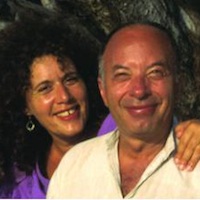“I object to violence because when it appears to do good, the good is only temporary; the evil it does is permanent.”
~ Mahatma Gandhi
The prison camp at Guantanamo Bay, built on a legacy of fear, was established to deal with violent terrorists, but instead became the cause of further suffering and chaos.
It is a prime example of the mindless, cruel and inhuman way we abuse our fellow human beings. For despite whatever these men may or may not have done, they are our human beings, inflicting pain—and the methods used at Gitmo achieves nothing but further pain.
Two wrongs do not make a right; to meet violence with more violence does not bring peace. Closing Gitmo does not say we condone violence, but that we do not intend to continue to act in such a barbaric way.
Of course, there are those who oppose closing the camp.
Fear is a powerful seductress waiting around every corner to grab our attention; hatred is like a snake always ready to bite. The nature of fear is to hold us back, to keep us in a place of closed heartedness. It will create an enemy even if one does not exist. Being fearless does not mean we have to stop or deny the fear; fearlessness is not a state of being without fear. Rather, it is fully feeling the fear, getting to know it, and then making friends with it.
“If we divide reality into two camps—the violent and the nonviolent—and stand in one camp while attacking the other, the world will never have peace.”
~ Thich Nhat Hanh
Mahatma Gandhi changed the course of history in India by proving that non-violence is more powerful than violence, bringing an end to British domination as he inspired millions of others to follow his lead. The Dalai Lama won the Nobel Peace Prize for practicing non-violence towards the invading Chinese. Nelson Mandela, Mother Teresa, Ang San Suu Kyi, and Archbishop Tutu have all stood out as practicing harmlessness or pacifism, often in the face of tremendous opposition. Additionally, Swami Satchidananda taught ahimsa or non-injury is the one practice in yoga that leads to self-realization.
Deb was raised a Quaker, whose creed is found in the statement: To travel over the earth meeting that of God in every man.
This is reflected in the Buddhist and yoga teaching of ahimsa. This sounds so simple, but harmlessness actually requires a complete shift in attitude. In a world where selfishness and self-interest are the norm it takes great courage not to react with greed or anger, which only cause harm. Simply by causing less pain, each of us can bring greater dignity to or world. By recognizing the fundamental equality of all beings, harm is replaced with harmlessness, disrespect with respect.
“We will always blame and condemn those we feel are responsible for wars and social injustice, without recognizing the degree of violence in ourselves. We must work on ourselves as well as with those we condemn if we wish to move towards peace.”
~ Thich Nhat Hanh
Aspiring to live harmlessly confronts us with the many ways we may be causing harm without realizing it, whether by ignoring someone’s feelings, by using more of the earth’s resources than we need, or by buying products made by underage and underpaid workers. What do we do when ants or cockroaches invade the kitchen or slugs eat away at the vegetable garden, and we do not want to harm them?
And how often do we do things that are hurtful or harmful to ourselves? How many times a day, subtly or otherwise, do we put ourselves down, reaffirm our hopelessness, dislike our appearance, or see ourselves as incompetent or unworthy? How much resentment, guilt or shame are we holding on to, thus perpetuating past negativity?
Are you ready to honor yourself and others equally? Is it not time to end the war within? For only then can we end the violence in the world.
~
Editor: Brianna Bemel








Read 4 comments and reply